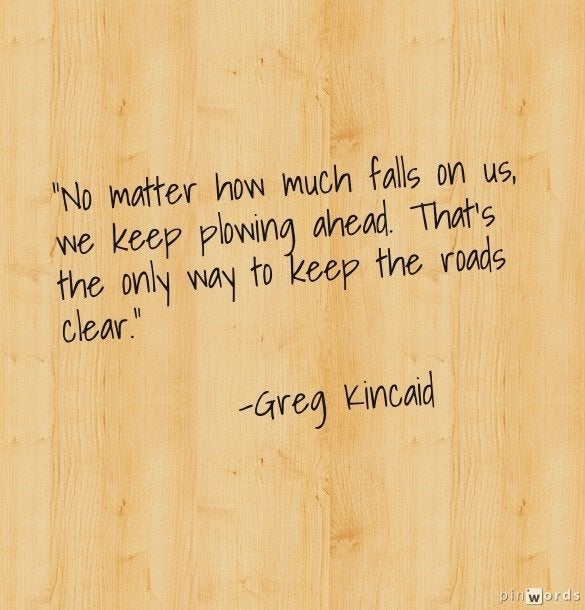
Even with a trail of many years' worth of failed New Years' resolutions behind us, each January, most of us look forward to a fresh start and an opportunity to set important goals for ourselves.
"We feel there is a need to change in the new year," positive psychologist Dr. Gabriele Oettingen, author of Rethinking Positive Thinking: Inside The New Science Of Motivation, tells the Huffington Post. "It's a good time to design a future for the next year."
So then why is it that while nearly half of Americans set New Years' resolutions each year, only an estimated 8 percent succeed?
Oettingen has an answer. When it comes to creating change, she says, most of us are very good at completing the first step of the process, which is envisioning what we want. We positively fantasize about fulfilling our desires for change in different areas of our lives, thereby creating resolutions like: I want to be better in my career. I want to be 15 pounds lighter. I want to spend more time with my children. I want to learn to play the piano.
It's usually after that point that we get stuck. Once we've envisioned our goals, there's one question that it's essential to ask ourselves -- and if we did, we'd have a far better chance of actually achieving our goals. Oettingen advises us to ask, What is it in me that's holding me back?
While it's important to know what your dreams are, simply fantasizing about You 2.0 may not get you very far in actually achieving those outcomes, even if you've devised a specific plan for getting there. Research has shown that dreaming about a desired future outcome can actually keep us from achieving that outcome, because in the dreaming we become complacent -- we are already mentally enjoying our dream, so we're less likely to put in the real-life hard work that it takes to get there. Our dreams, according to Oettingen, can actually diminish motivation and action.
In contrast, reflecting on what holds us back can spur us to productive action. It's a question to approach with a lot of brutal honesty, and a healthy dose of self-deprecating humor. It's part of a science-backed technique for goal attainment known as mental contrasting, which research has shown to be a highly effective way to dislodge the excuses that keep us from doing what we must do to achieve our goals. Mental contrasting is a strategy in which a desired future outcome is contrasted with the challenging realities we currently face and may face in the pursuit of our goal.
"What we've found, in the many studies we've done, is that mental contrasting could help a lot," says Oettingen. "It means that I can take these positive fantasies and then shift gears and say, 'What holds me back from meeting these positive fantasies? What is it in me that prevents this?'"
This inquiry may not necessarily be the most comfortable or fun to make, but it can be a powerful way help you to avoid the aforementioned pitfalls of positive thinking. The thing holding you back could be a deeply-entrenched bad habit, an old hangup, a negative belief about yourself, or a more challenging personality trait. The inquiry may bring up things that you didn't realize about yourself, and could help you to identify what you should have been doing all along. They can help us to figure out what the obstacles to our dreams are.
Oettingen has put together a goal-attainment technique based on mental contrasting called WOOP -- an acronym that stands for wish, outcome, obstacle and plan. Here are the four steps of the WOOP system, which might help you keep your resolutions this year:
- Wish: "Formulate an idea of something you really want, something that is very dear to you," says Oettingen. "But that doesn't mean yet that you formulate the desired outcome in your mind." The wish could be specific (eating greens every day) or vague (finding more purpose in your life). The only important qualification for the wish is that it's something you really want.
- Outcome: Then, you define what the best outcome of the wish looks like in your life. What makes the wish so attractive? Visualize how achieving your wish makes you feel and how it changes your life.
- Obstacle: At this stage, it's time to ask that important question: What's holding me back? Identify and mentally experience the obstacle, imaging it as clearly as you image the wish.
- Plan: Then, create a plan for dealing with the obstacles when they arise. It could be an if/then statement like, "If I'm tempted to reach for that last donut, then I'll remind myself that I get a special reward for avoiding dessert for a week." Once you have all four steps in place, you'll be ready to tackle your goals -- no matter what life throws in your way.
This mental contrasting framework can be applied to any type of resolution you have -- whether it's getting in shape, making a career change, improving your marriage, or getting eight hours of sleep per night -- as a way to help you both identify your dreams and go through with the hard work required to meet those goals.

